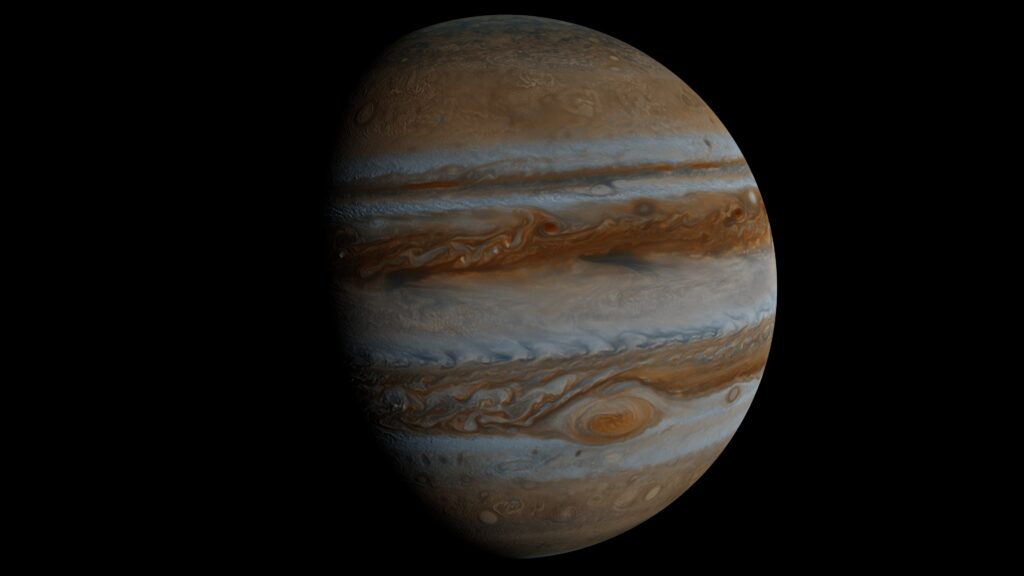This astronomical alignment denotes both a close approach and a conjunction, where two celestial bodies are located at the same right ascension (or longitude) in the sky.
On Monday, September 4, the Moon and Jupiter will align in the night sky, setting the stage for an amazing celestial event. One will be able to see both the Earth’s natural satellite and the largest planet in our solar system up close. During this near approach and conjunction, the Moon and Jupiter will both be located within the Aries constellation, according to Space.com. It will be the waning gibbous phase of the moon. At this stage, sunlight will cover 64% of the moon’s surface. In contrast, Jupiter will be astonishingly near to the Moon, only 3 degrees apart, or roughly the breadth of two fingers held at arm’s length.
How do you view?
On Tuesday, September 5, this cosmic meeting will be visible from New York City beginning just after they rise above the eastern horizon at around 10 pm EDT (0200 GMT) and will last until just before they sink below the horizon at about 11:52 am EDT (1552 GMT). During this time, Jupiter will be directly above and to the right of the moon.

Conjunction
This astronomical alignment denotes both a close approach and a conjunction, where two celestial bodies are located at the same right ascension (or longitude) in the sky.
On Monday, September 4, the Moon will shine with a brightness of magnitude -12.3, while Jupiter will shine with a brightness of magnitude -2.7 (lower or negative values imply brighter objects).
As a result of its proximity to Earth, the Moon will appear much bigger and outshine Jupiter in the night sky. Jupiter will appear faint in comparison despite its enormous size.
Even if the Moon predominates the night sky during the close approach, it’s crucial to recognize how much larger the Moon is than the Sun.
Jupiter is 11 times bigger than Earth, with a breadth of around 89,000 miles (143,000 km). With a diameter of roughly 2,200 miles (3,500 kilometers), the Moon is considerably smaller than Jupiter.
Jupiter’s equator could only be covered by at least 44 lined-up Moons.
The spectacular moons of Jupiter
Some of Jupiter’s moons are larger than our moon and some of the planets in the solar system combined.
The diameter of Ganymede, the largest of the Jovian moons, is 3,270 miles (5,268 km), exceeding that of Mercury, which has a diameter of 3,032 miles (4,879 km).
Observing the event
Despite their close proximity, the Moon and Jupiter will still appear too far apart to be seen simultaneously in a telescope’s limited field of view, according to Space.com. However, binoculars, with their larger field of view, will offer a fantastic method to view Jupiter and the moon at the same time.

